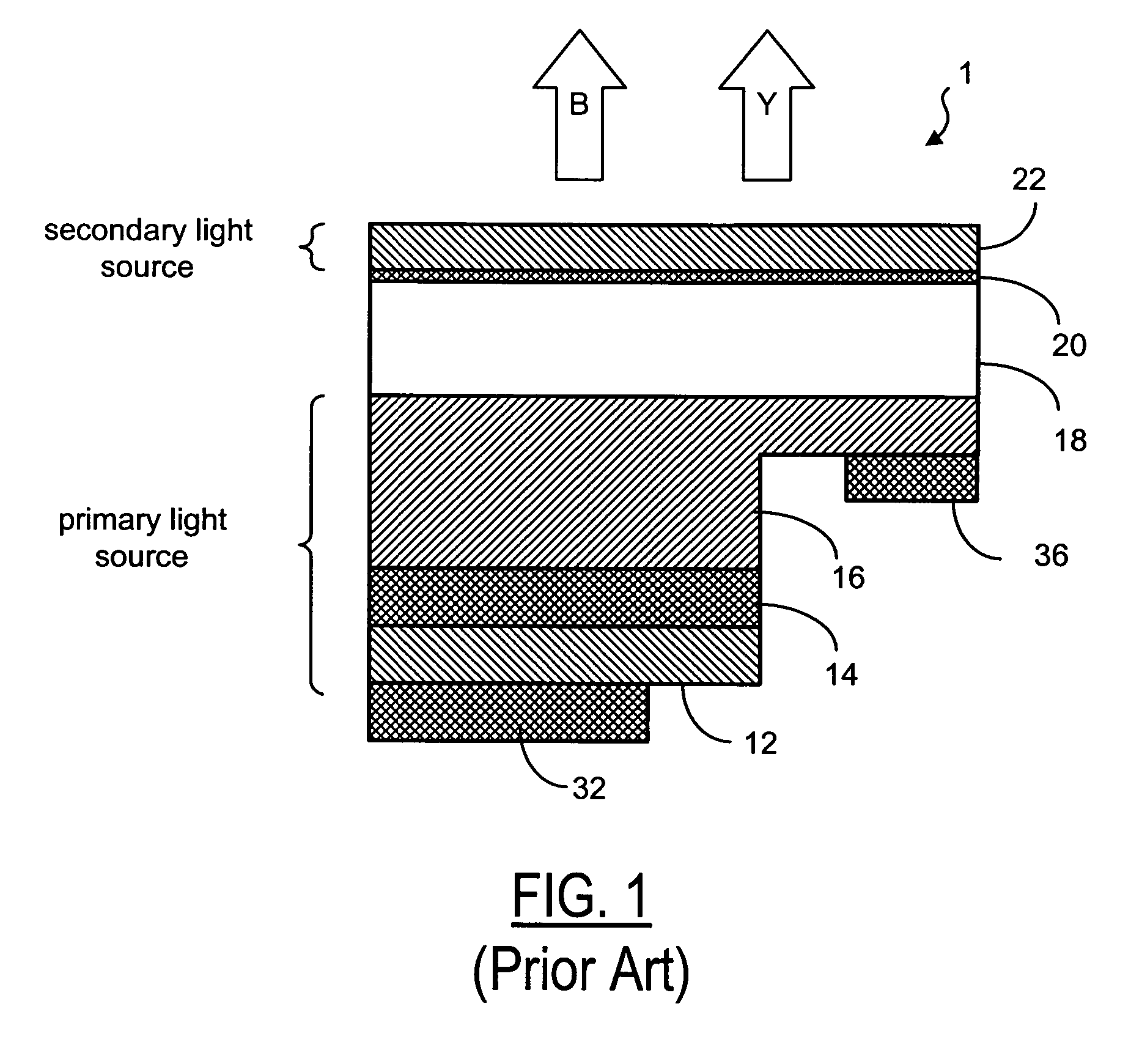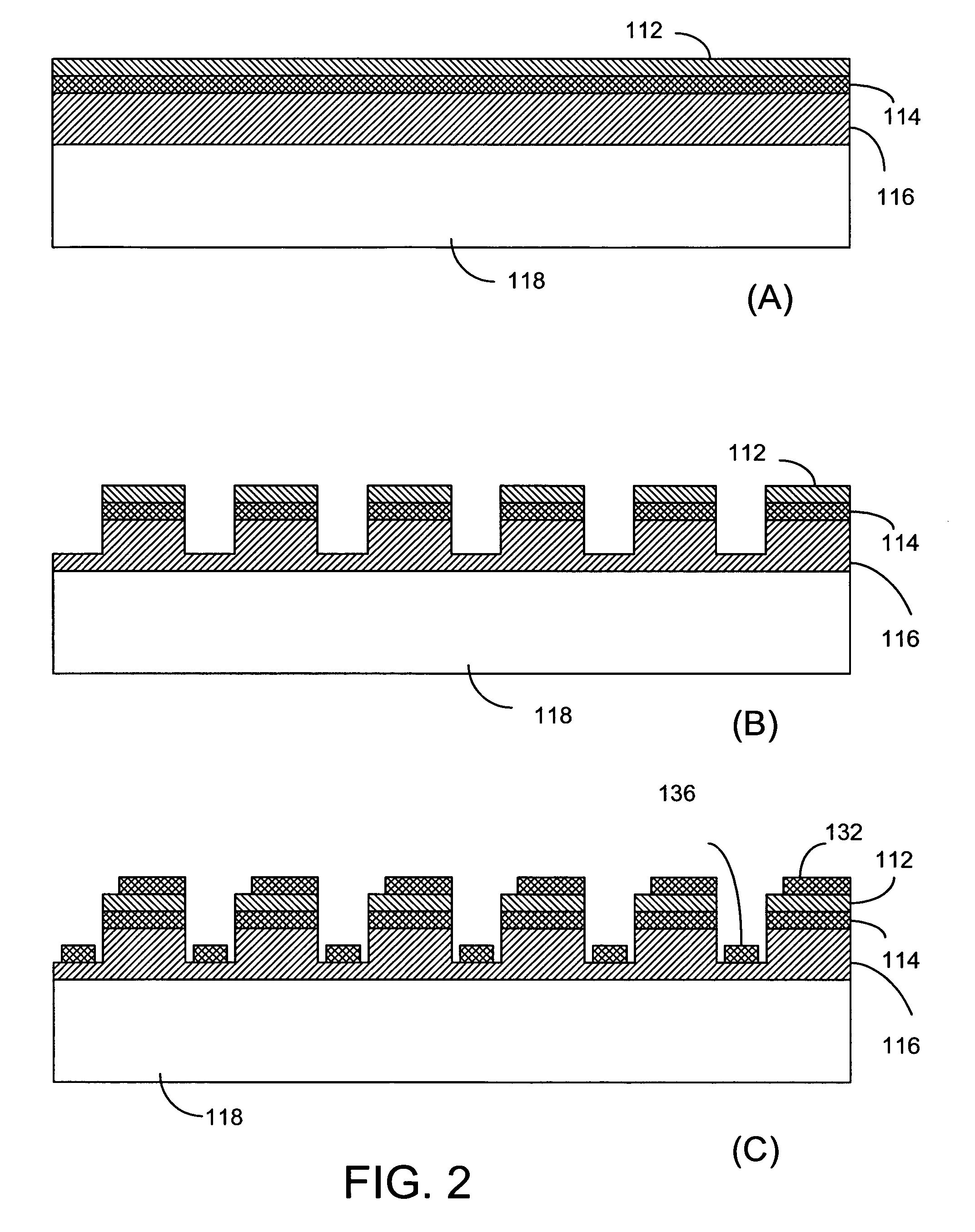White light emitting device and method of making same
a light-emitting diode and white light-emitting technology, which is applied in the direction of semiconductor devices, basic electric elements, electrical equipment, etc., can solve the problems of uv radiation from the leds, the combined color would change noticeably, and the life of the uv leds is relatively shor
- Summary
- Abstract
- Description
- Claims
- Application Information
AI Technical Summary
Benefits of technology
Problems solved by technology
Method used
Image
Examples
Embodiment Construction
[0088]In order to achieve three primary colors red, green and blue in the white-light source, the present invention uses at least two discrete dual-color LEDs. A first dual-color LED emits red light and blue light, and a second dual-color LED emits red light and green light. As such, the combined light emission contains red light, green light and blue light. The present invention provides two distinct embodiments of the white-emitting light devices produced by two different methods. FIGS. 2a to 2h show a first method for producing dual-color LEDs, according to the present invention.
[0089]FIG. 2a shows various material layers disposed on a transparent substrate for producing a primary light source structure. As shown in FIG. 2a, an n-type GaN layer 116 is epitaxially grown on a sapphire substrate 118. A layer 114 of blue-light emitting InGaN is epitaxially grown on the n-type GaN layer 116 and then a p-type GaN layer 112 is epitaxially grown on the InGaN layer 114. The combined layer...
PUM
 Login to View More
Login to View More Abstract
Description
Claims
Application Information
 Login to View More
Login to View More - R&D
- Intellectual Property
- Life Sciences
- Materials
- Tech Scout
- Unparalleled Data Quality
- Higher Quality Content
- 60% Fewer Hallucinations
Browse by: Latest US Patents, China's latest patents, Technical Efficacy Thesaurus, Application Domain, Technology Topic, Popular Technical Reports.
© 2025 PatSnap. All rights reserved.Legal|Privacy policy|Modern Slavery Act Transparency Statement|Sitemap|About US| Contact US: help@patsnap.com



